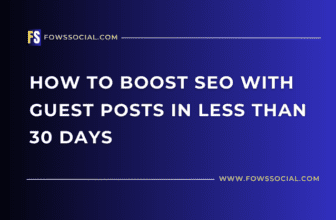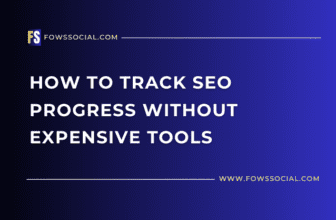Why Your Blog Isnt Ranking and How to Fix It
Why Your Blog Is Not Ranking and How to Improve Its Ranking
Blogging is now a crucial component of numerous business marketing strategies. A well-performing blog can help businesses reach a global audience, boost brand visibility, drive higher website traffic, improve conversion rates, and ultimately generate more revenue. However, even with diligent efforts, some bloggers may find that their blogs do not rank as highly as desired in search engine results.
If you’re in this situation, don’t fret – you’re not the only one. There are multiple reasons why your blog may be struggling to rank as well as you want, but the good news is there are steps you can take to address the issue. In this article, we will cover common reasons why your blog is not ranking and offer practical advice on how to boost its performance.
1. Insufficient keyword optimization
Your blog may not be ranking well primarily because you are not optimizing your content with the appropriate keywords. Keywords are the terms that users search for in order to find specific information. By incorporating relevant keywords into your blog posts, you can improve the likelihood of your content being found by potential readers.
In order to address this problem, begin by conducting keyword research to determine the most pertinent keywords for your specific field. Utilize tools such as Google Keyword Planner or SEMrush to discover keywords that have high search volumes and minimal competition. After that, strategically integrate these keywords into your blog content to increase your likelihood of achieving a higher ranking in search engine results.
2. Absence of high-quality content
Your blog may not be ranking well due to low-quality content. Search engines, such as Google, prioritize informative, engaging, and well-written content. Blog posts with grammatical errors, typos, and outdated information are unlikely to rank well in search engine results.
In order to tackle this problem, prioritize developing top-notch, unique content that adds value to your audience. Ensure that your articles are thoroughly researched, efficiently structured, and delivered in a straightforward manner. Also, think about integrating multimedia components like pictures, videos, and infographics to enhance the appeal and interest of your content for readers.
3. Weak on-page SEO
On-page SEO is the practice of optimizing individual web pages to enhance their search engine rankings. Failure to properly optimize your blog posts for on-page SEO can result in lower rankings in search engine results. Some common on-page SEO errors include not incorporating relevant keywords in post titles, meta descriptions, and headers, as well as overlooking the importance of using internal and external links.
In order to address this problem, first focus on optimizing your blog posts for on-page SEO. Ensure that your post titles are clear, descriptive, and contain relevant keywords. Craft compelling meta descriptions that encourage users to interact with your content. Utilize headers to organize your content and enhance readability. Also, incorporate internal links to other pertinent pages on your website and external links to reputable sources to enhance your blog’s credibility.
The page speed is slow.
Page speed plays a crucial role in determining your blog’s search engine rankings. A slow loading time can result in users quickly navigating away from your site, increasing the bounce rate and potentially lowering your ranking. Utilize tools such as Google PageSpeed Insights or GTmetrix to assess your blog’s page speed and make necessary improvements.
In order to enhance your blog’s page speed, begin by optimizing images and decreasing file sizes. Limit the usage of plugins and scripts that may hinder your website’s speed. Utilize a content delivery network (CDN) to distribute your content on different servers and lower server response times. Also, take advantage of browser caching to store static resources on users’ devices and enhance loading times.
5. Insufficient number of inbound links
Backlinks are crucial links from external websites that direct visitors to your blog. They play a significant role in boosting your blog’s authority and trustworthiness with search engines. Without sufficient backlinks, your blog may have difficulty achieving high rankings in search engine results.
One way to tackle this problem is to create a backlink strategy to bring in top-notch backlinks to your blog. Reach out to industry influencers, bloggers, and websites in your niche to ask for backlinks to your content. Another effective approach is guest posting on trustworthy websites to boost your blog’s visibility. Also, try creating shareable content that is likely to naturally attract backlinks from other websites.
Ultimately, if your blog is not performing well in search engine rankings, there are various typical reasons for this. It is important to address issues such as inadequate keyword optimization, low-quality content, weak on-page SEO, slow page speed, and lack of backlinks in order to enhance your blog’s visibility and traffic. Keep in mind that SEO requires continuous effort, so stay patient and consistently monitor and optimize your blog for improved results in the future.








